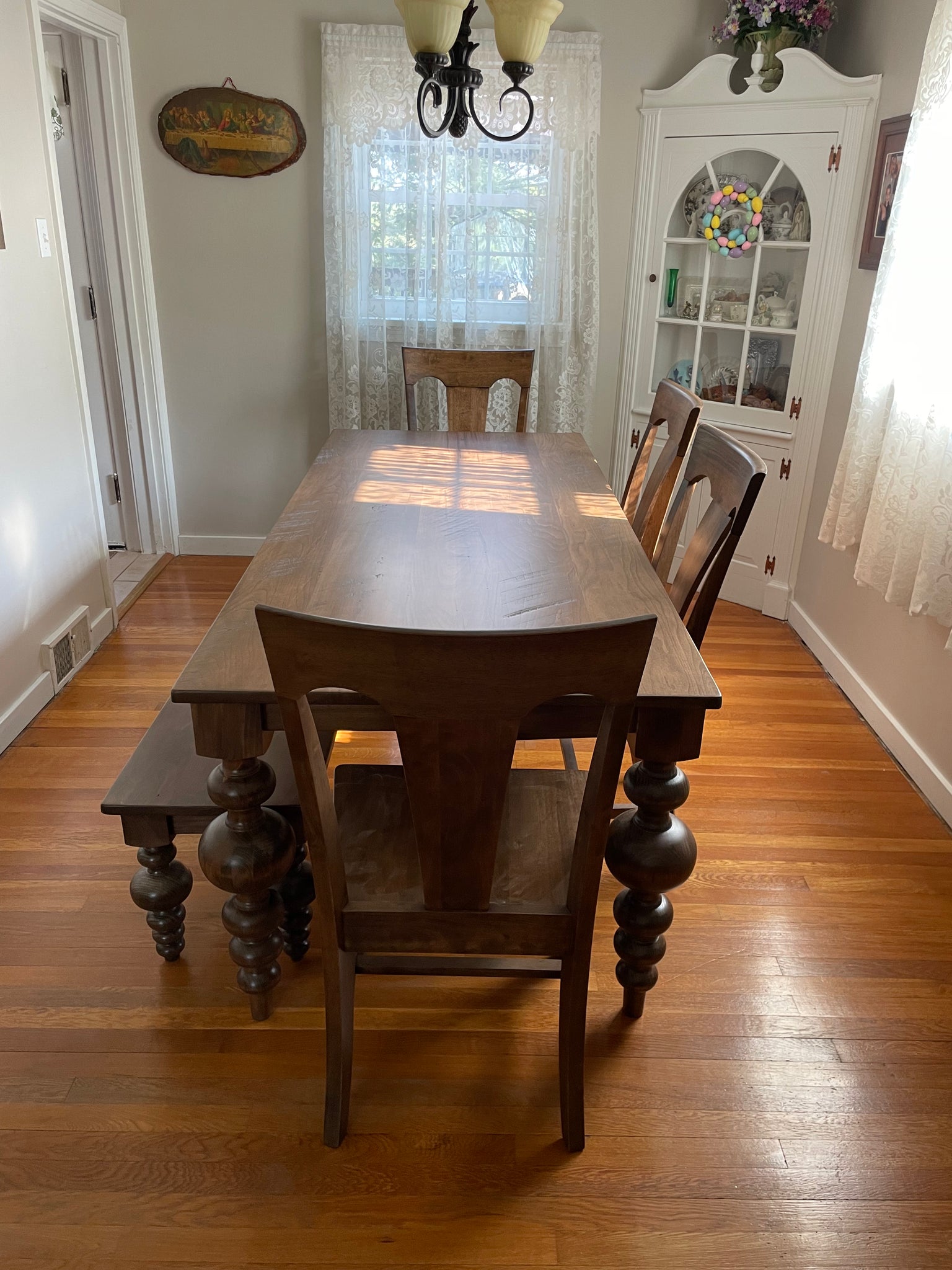Checking Out Various Designs for Dining Room Table Legs to Match Your Visual
Checking Out Various Designs for Dining Room Table Legs to Match Your Visual
Blog Article
A Comprehensive Check Out Dining Table Leg Styles: Finding the Ideal Match
Selecting the appropriate dining table leg design is vital for both visual allure and practical functionality. Conventional 4 legs supply timeless sophistication and security, while the stand base supplies boosted legroom and a modern look. For those with bigger tables, trestle legs make sure tough support, whereas hairpin legs present a mid-century modern-day vibe with their minimal design. The x-shaped legs mix contemporary design with improved stability. Each of these alternatives brings special benefits, making the choice much more than just an issue of choice. Explore further to find which style perfectly enhances your dining area and way of life.
Traditional Four Legs
Amongst the various kinds of eating table leg styles, the traditional four-leg design remains a classic option for many homes. 4 legs give balanced support, making sure the table remains secure and capable of bearing substantial weight (dining room table legs).
From a visual viewpoint, the standard four-leg design can be quickly adjusted to different interior designs. Whether crafted from wood, metal, or a mix of products, these legs can be intricately sculpted, smooth and minimalistic, or anything in between. Their versatility allows them to match both rustic and modern settings perfectly.
Moreover, the straightforward structure of the four-leg layout helps with convenience of motion and placement within a room. Unlike more complicated bases, this design lessens obstructions, offering ample legroom for diners. In summary, the standard four-leg table leg design weds sustaining style with sensible functionality, making it an astute selection for those looking for both form and feature in their dining furnishings.
Pedestal Base
Frequently celebrated for its classy and space-efficient style, the pedestal base is a prominent alternative to the conventional four-leg configuration in dining table leg styles. Without corner legs, diners are managed higher freedom of motion, making it an ideal selection for round and oval tables that promote more intimate and inclusive gatherings.
In addition, the stand base's central support can deal with considerable weight, enabling using larger table tops, such as marble or thick hardwood. This stamina combined with its visual convenience makes the pedestal base a preferred choice in both conventional and contemporary indoor settings. It can seamlessly integrate with different layout styles, from traditional style to minimalist modernity. The central column itself uses a canvas for elaborate styles and artistic expressions, including an element of visual interest underneath the table. In summary, the pedestal base integrates performance snappy, making it a refined and sensible choice for varied eating settings.
Trestle Legs
Trestle legs offer a robust and timeless structure for eating tables, identified by their straight cross-bracing and sturdy support light beams. Stemming from medieval times, this style has actually evolved yet maintained its necessary structure, making it a seasonal favorite in both typical and contemporary settings. The main trestle beam, commonly sustained by two or even more vertical articles, supplies extraordinary security, enabling for visit the website bigger table sizes without the requirement for added legs.
A significant benefit of trestle leg tables is the adequate legroom they use. Unlike tables with four edge legs, the lack of obstructions at the table's edges gives unobstructed space for chairs and restaurants, enhancing convenience and access. This makes trestle tables ideal for suiting larger gatherings, whether in a dining-room or a banquet hall.
The visual convenience of trestle legs is noteworthy. Offered in a selection of materials such as wood, metal, and composite, they can be ended up to enhance a large range of indoor designs. From rustic farmhouse to sleek modern-day designs, trestle legs can be personalized to match private tastes. Their long-lasting allure and functional benefits make trestle legs a compelling selection for those seeking both style and functionality in their table.
Hairpin Legs

The charm of hairpin legs hinges on their simplicity and versatility - dining room table legs. Offered in a variety of materials, including steel and brass, they can be completed in countless colors to match different interior styles. Whether coupled with a rustic wooden table top or a contemporary glass surface, barrette legs easily blend performance with a touch of classic charm
Resilience is an additional noteworthy function of barrette legs. Regardless of their delicate appearance, these legs are engineered to bear considerable weight, making certain the dining table stays steady and safe. In addition, they are fairly simple to mount, making them a popular option for DIY enthusiasts and expert furniture manufacturers alike.
X-Shaped Legs

Created from products such as steel, timber, or a combination of both, X-shaped legs can be tailored to match numerous layout preferences. Steel legs commonly lend a smooth and industrial feeling, perfect for loft-style homes and contemporary eating spaces.
In addition, the engineering behind X-shaped legs guarantees also weight distribution, reducing the risk of tottering and enhancing sturdiness. This makes them particularly fit for bigger dining tables that require additional assistance. Essentially, X-shaped legs mix functional engineering with modern-day appearances, making them an ageless choice for diverse eating environments.
Verdict
A thorough understanding of eating table leg designs reveals the distinct features and look here benefits of each style. Trestle legs ensure robust assistance for larger tables, and barrette legs present a mid-century modern-day aesthetic.
Report this page